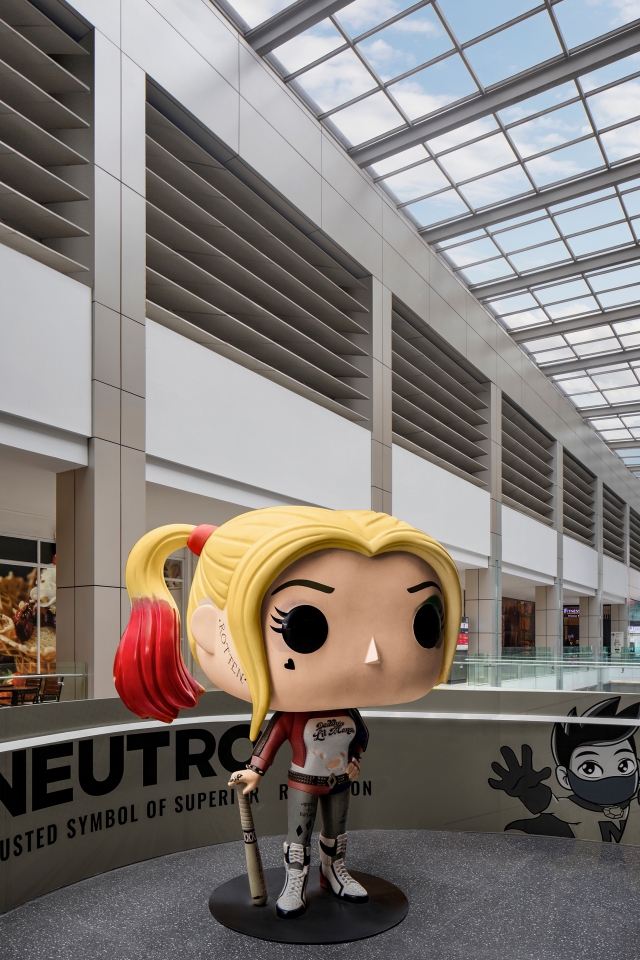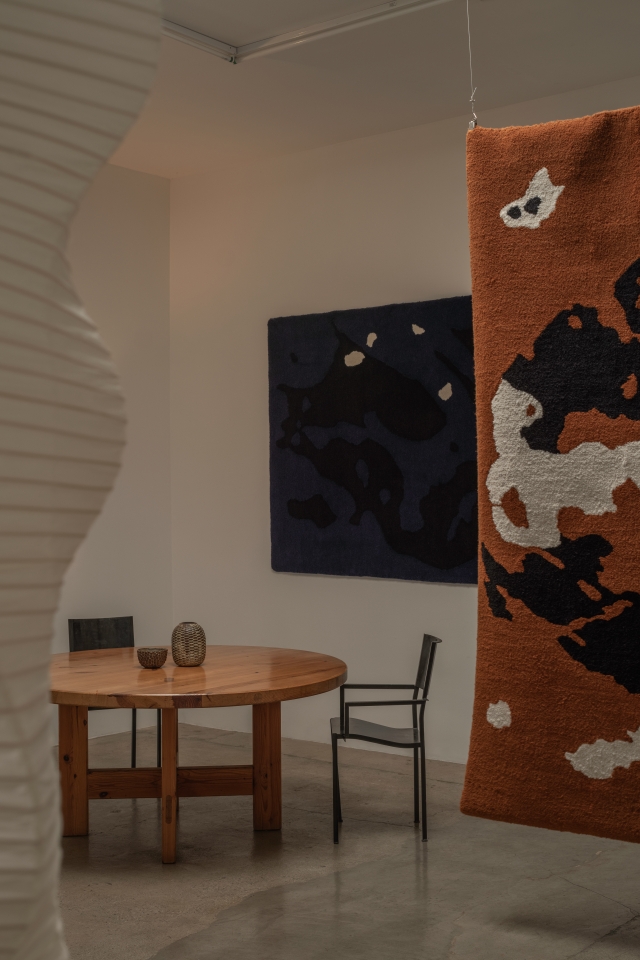Hauser & Wirth’s lineup for the second edition of Frieze Seoul will include Rita Ackermann, Louise Bourgeois, John Chamberlain, George Condo, Paul McCarthy, Nicole Eisenman, Günther Förg, Philip Guston, Jenny Holzer, Roni Horn, Rashid Johnson, Glenn Ligon, Nicolas Party and Mika Rottenberg. The presentation also reflects the latest activities in the gallery program, with a focus on artists who recently joined the gallery, including Catherine Goodman, Camille Henrot, the Estate of Cathy Josefowitz, Allison Katz, Harmony Korine, Angel Otero and Daniel Turner.
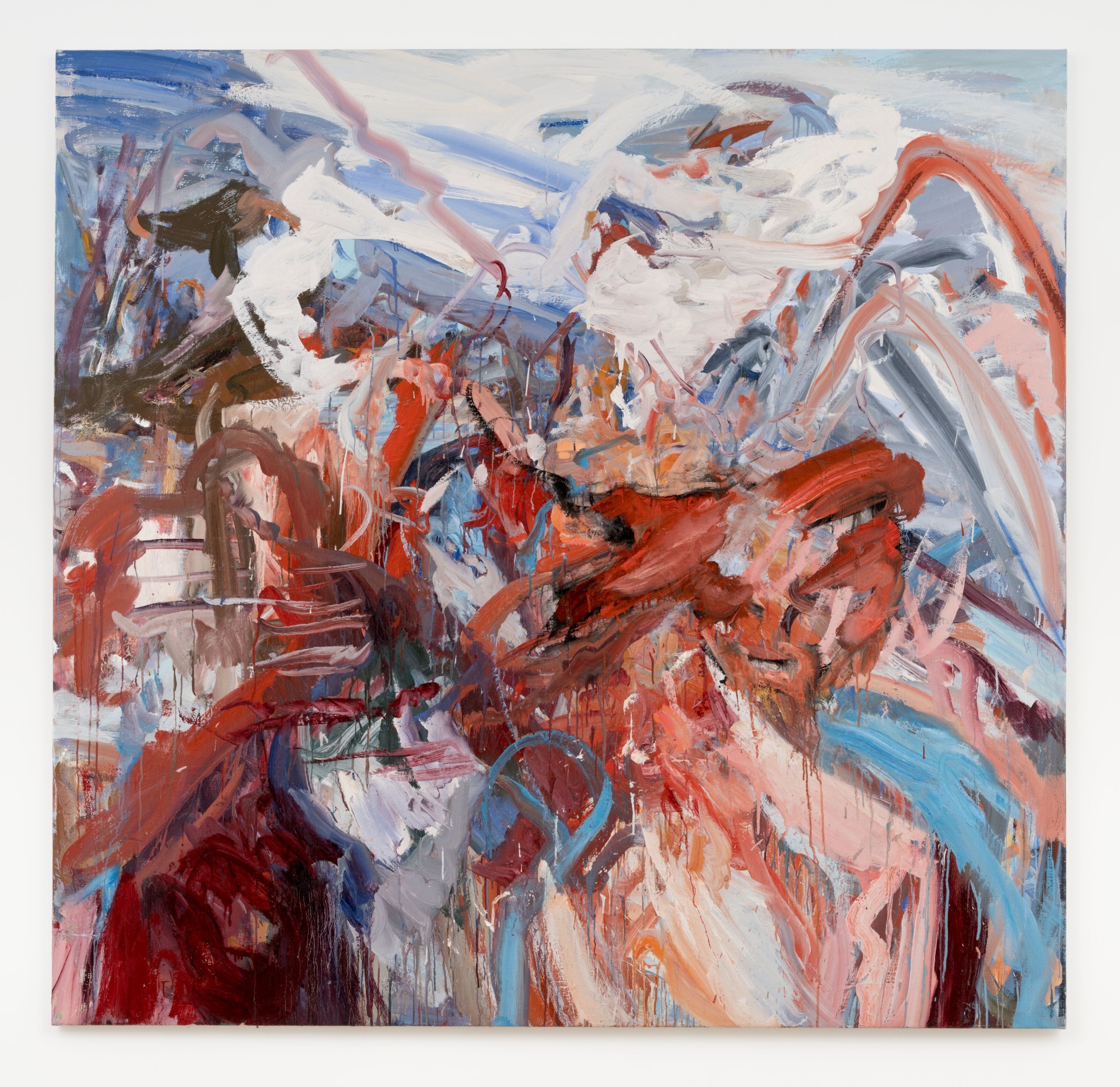
Loic in the Mountains
2023
Oil on linen
209.6 x 201.9 x 4 cm / 82 1/2 x 79 1/2 x 1 5/8 in
©️ Catherine Goodman
Courtesy the artist and Hauser & Wirth
Photo: Damian Griffiths
Modern highlights from this year’s booth include Philip Guston’s ‘Combat I’ (1978). Exemplifying his late figurative style, the painting portrays a cluster of extended arms, horseshoes and shoe soles bursting from the edge of the canvas. The ambiguous iconography at once evokes the makeshift armament of childhood street fights and real-world conflict. Accordingly, ‘Combat I’ resonates with such historical and contemporary events as the Holocaust, the Vietnam War and the violence and social unrest of the late 1960s, allowing viewers to discern the emotional weight and turmoil experienced during this period. Ultimately, the artwork stands as a testament to the artist’s profound ability to introspectively capture the multifaceted struggles and complexities of his time. Louise Bourgeois’ ‘Figure’ (1954) is a late example of the artist’s seminal Personage series. This group of wood sculptures, created from 1946 to 1955 and later cast in bronze, heralded a pivotal new chapter of artistic expression within her practice. Combining anthropomorphic and abstract elements, ‘Figure’ consists of painted geometric bronze elements threaded on a central pole. With its captivating architectural form and psychological depth, ‘Figure’ exemplifies Bourgeois’s desire for emotional balance and stability.
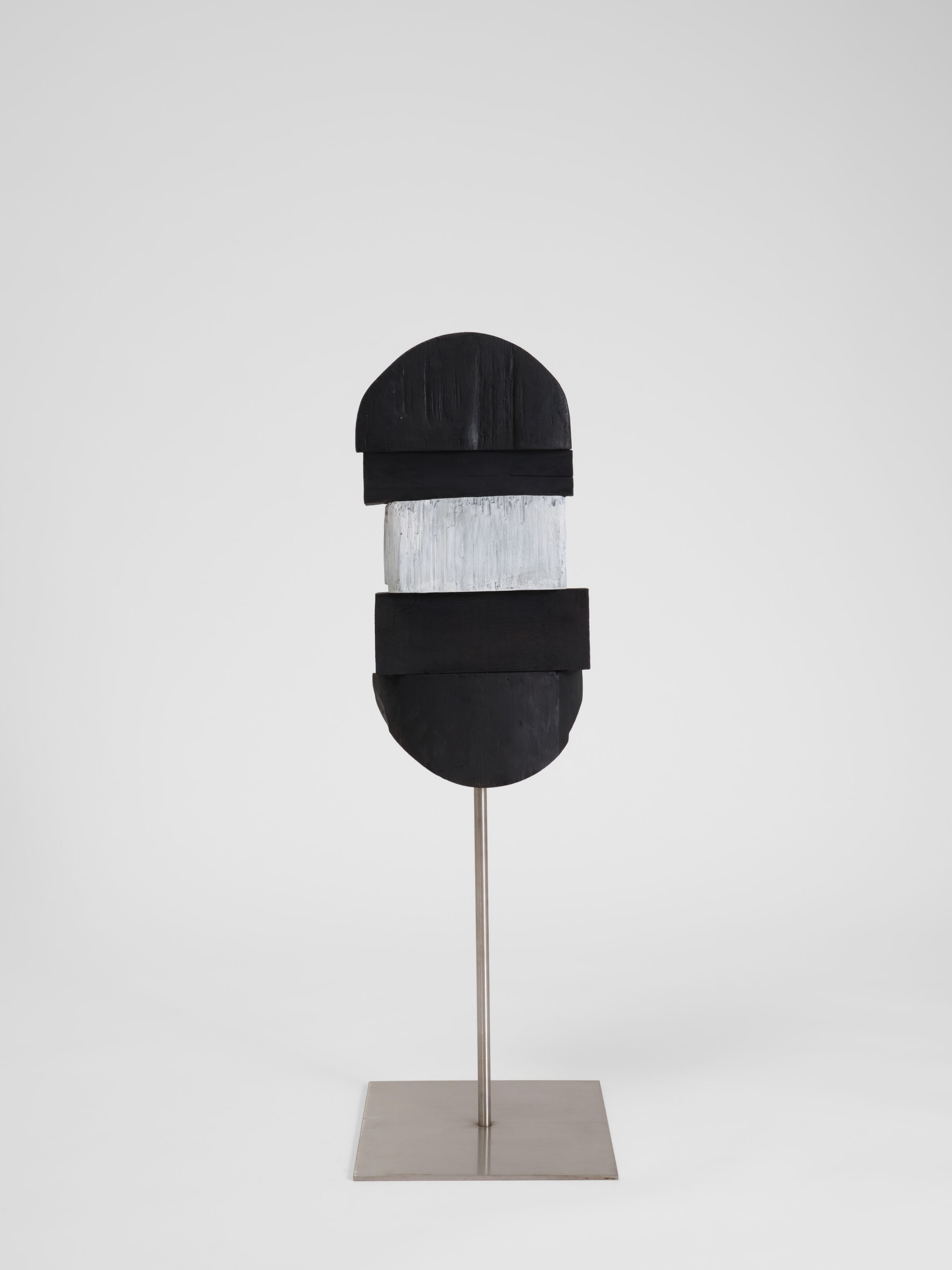
1954
Painted bronze and stainless steel
98.4 x 30.5 x 30.5 cm / 38 3/4 x 12 x 12 in
© The Easton Foundation
Courtesy The Easton Foundation and Hauser & Wirth
Photo: Thomas Barratt
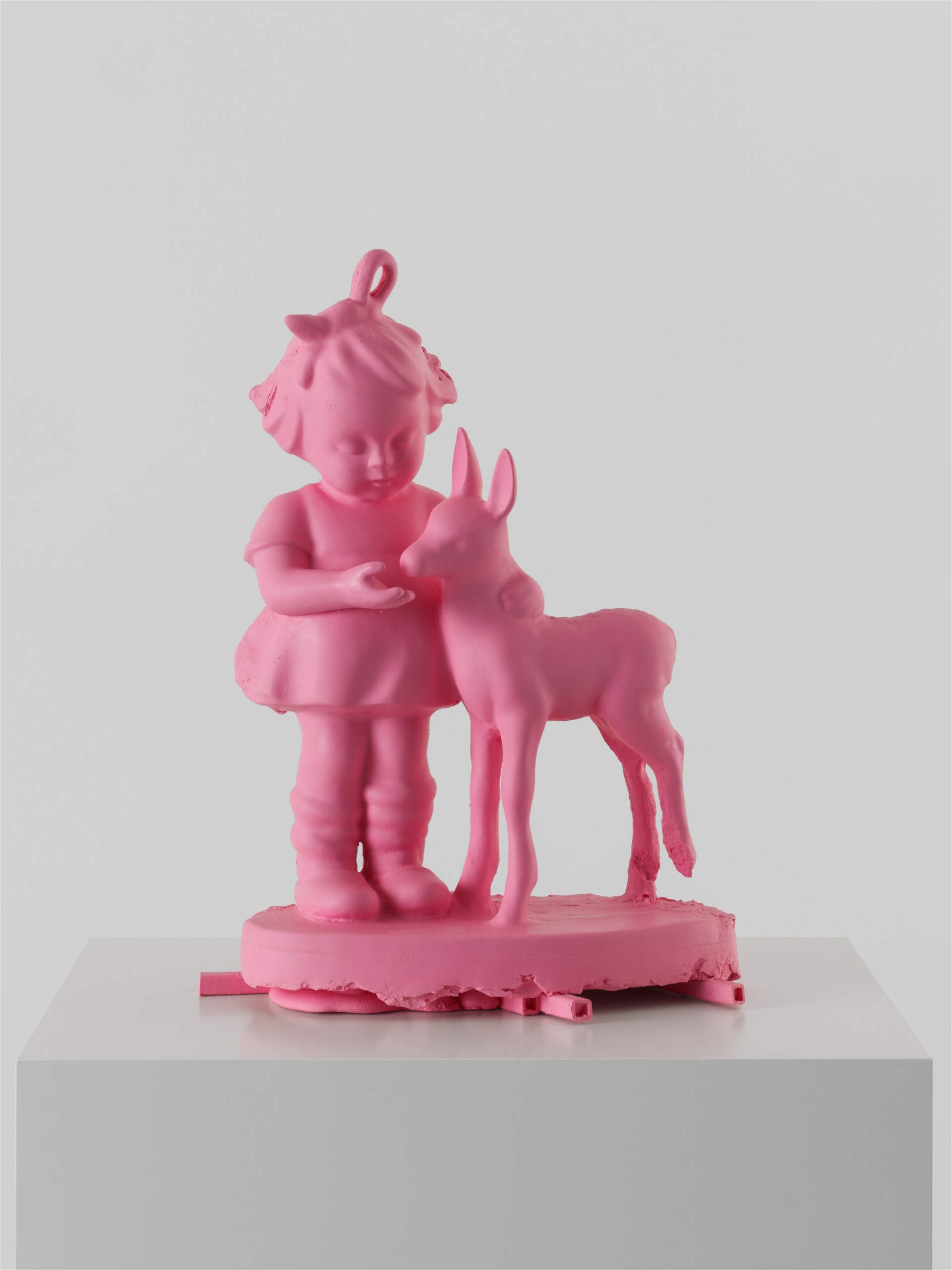
2006-2008
Pink silicone rubber, steel
73.7 x 61 x 40.6 cm / 29 x 24 x 16 in
© Paul McCarthy
Courtesy the artist and Hauser & Wirth
Photo: Stefan Altenburger Photography Zürich
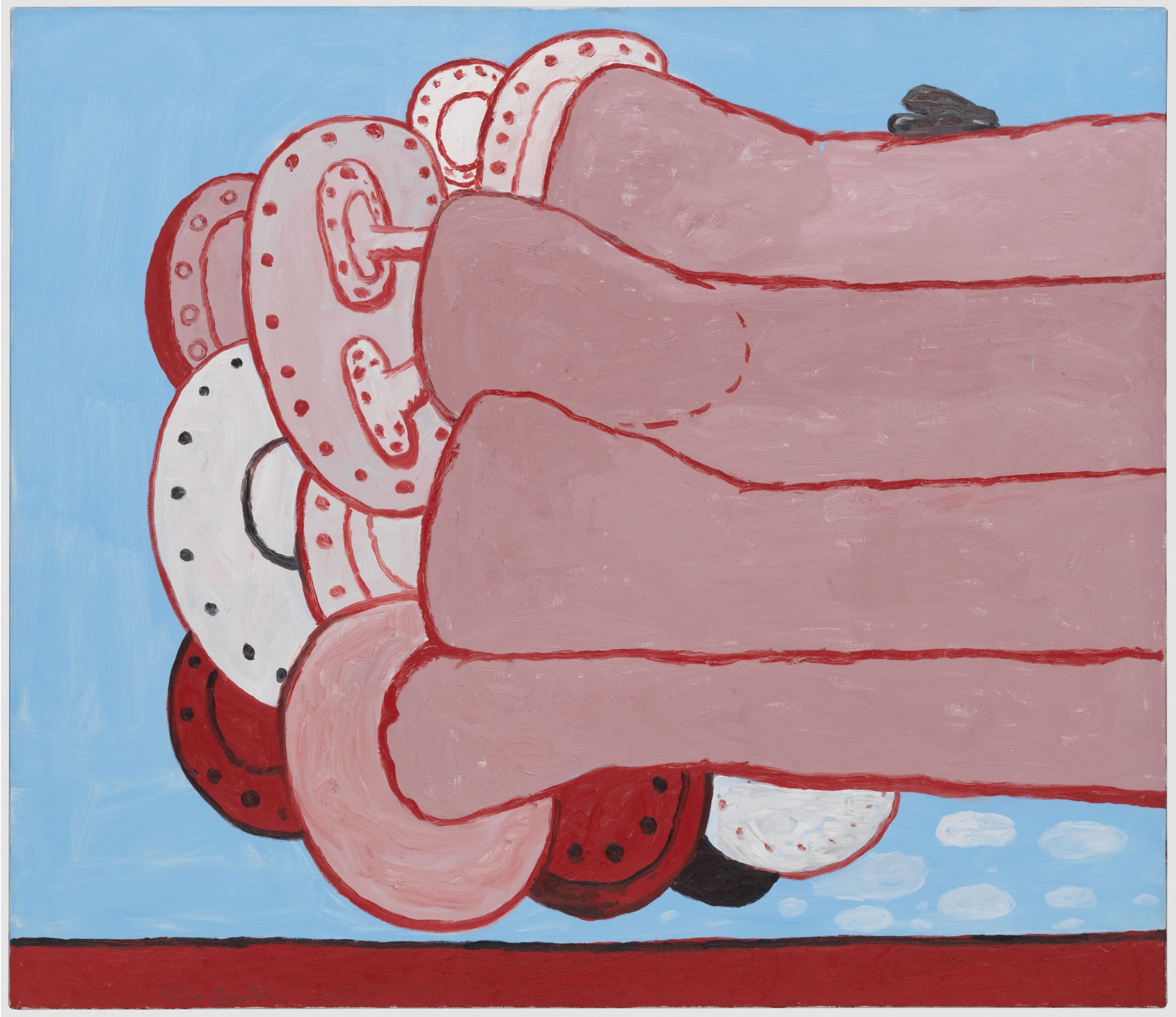
1978
Oil on canvas
132.1 x 152.4 cm / 52 x 60 in
136.5 x 157.2 x 5.7 cm / 53 3/4 x 61 7/8 x 2 1/4 in (framed)
© The Estate of Philip Guston
Courtesy the Estate and Hauser & Wirth
Photo: Stefan Altenburger Photography
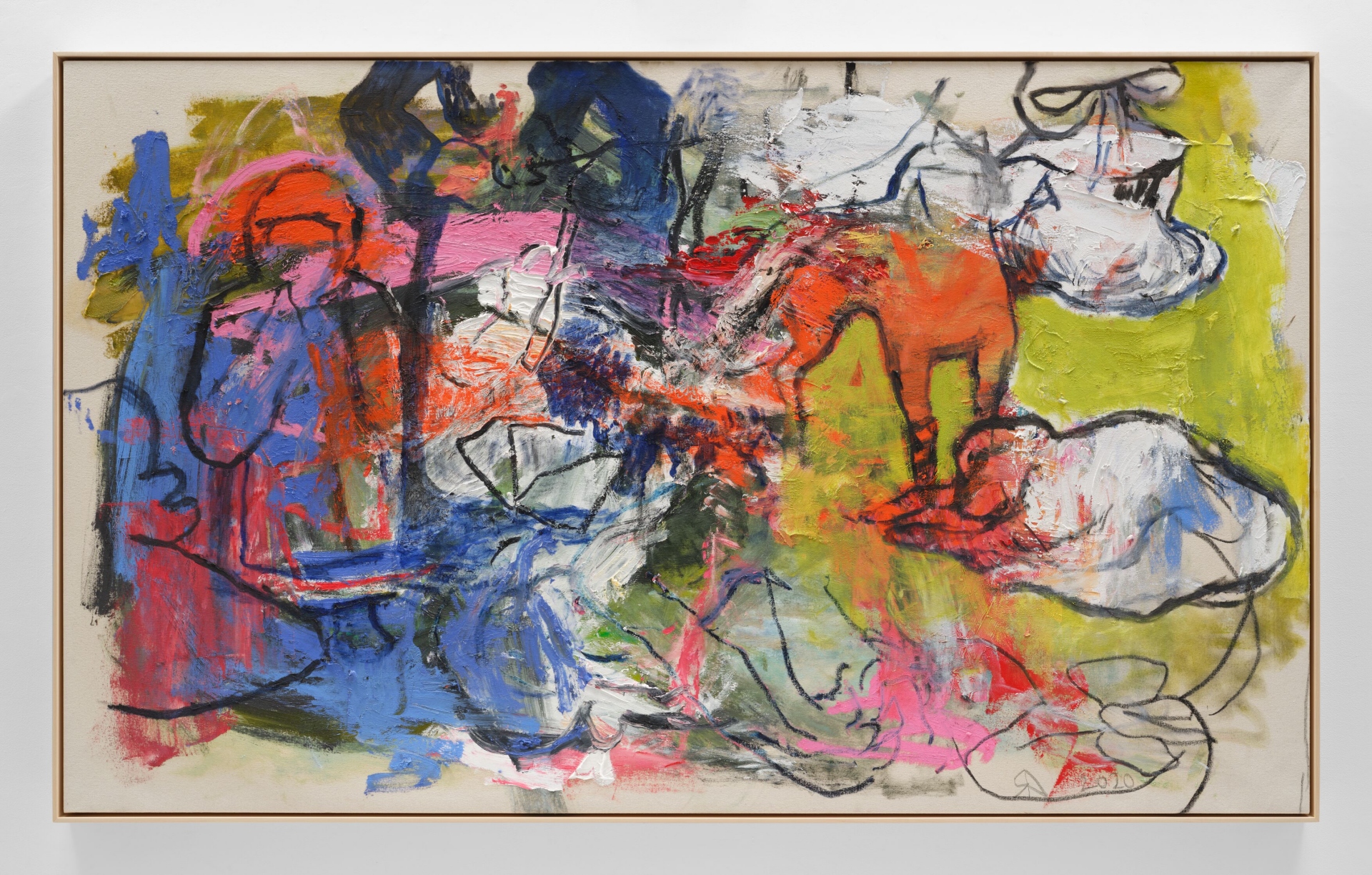
2020
Oil on canvas119.4 x 198.1 cm / 47 x 78 in
122.6 x 201.9 x 6.4 cm / 48 1/4 x 79 1/2 x 2 1/2 in (framed)
© Rita Ackermann
Courtesy the artist and Hauser & Wirth
Photo: Thomas Barratt
The booth also features exceptional contemporary works, such as Rita Ackermann’s ‘Breton Women Deconstructed (after E. Bernard)’ (2020), based on post-impressionist painter Émile Bernard’s ‘Breton Women in a Green Pasture’ (1888). Bernard was an advocate of reducing colors and lines and of simplifying the subject to main contours and prime colors. Adapting this theory and composition, Ackermann deconstructed the painting by letting chance guide her to a new picture. Earlier this year, the gallery welcomed the Estate of Cathy Josefowitz. The painting ‘Untitled’ (1974 c.) is a powerful example of the artist’s early paintings in which the motif of performance and dance takes center stage. Josefowitz’s fascination with performance stemmed from her study of stage design in 1972 and her paintings from this period are richly populated by musicians, acrobats, circus performers, Pierrots, lovers and dancers. Combined with the expressionistic language used to depict the figures, a strong sense of theatrical narration is visible in the painting’s composition. The themes explored during these formative years mark the beginning of Josefowitz’s lifelong pursuit to dismantle the hierarchy that separated performance and painting, and to reconcile these two mediums in a unified practice.
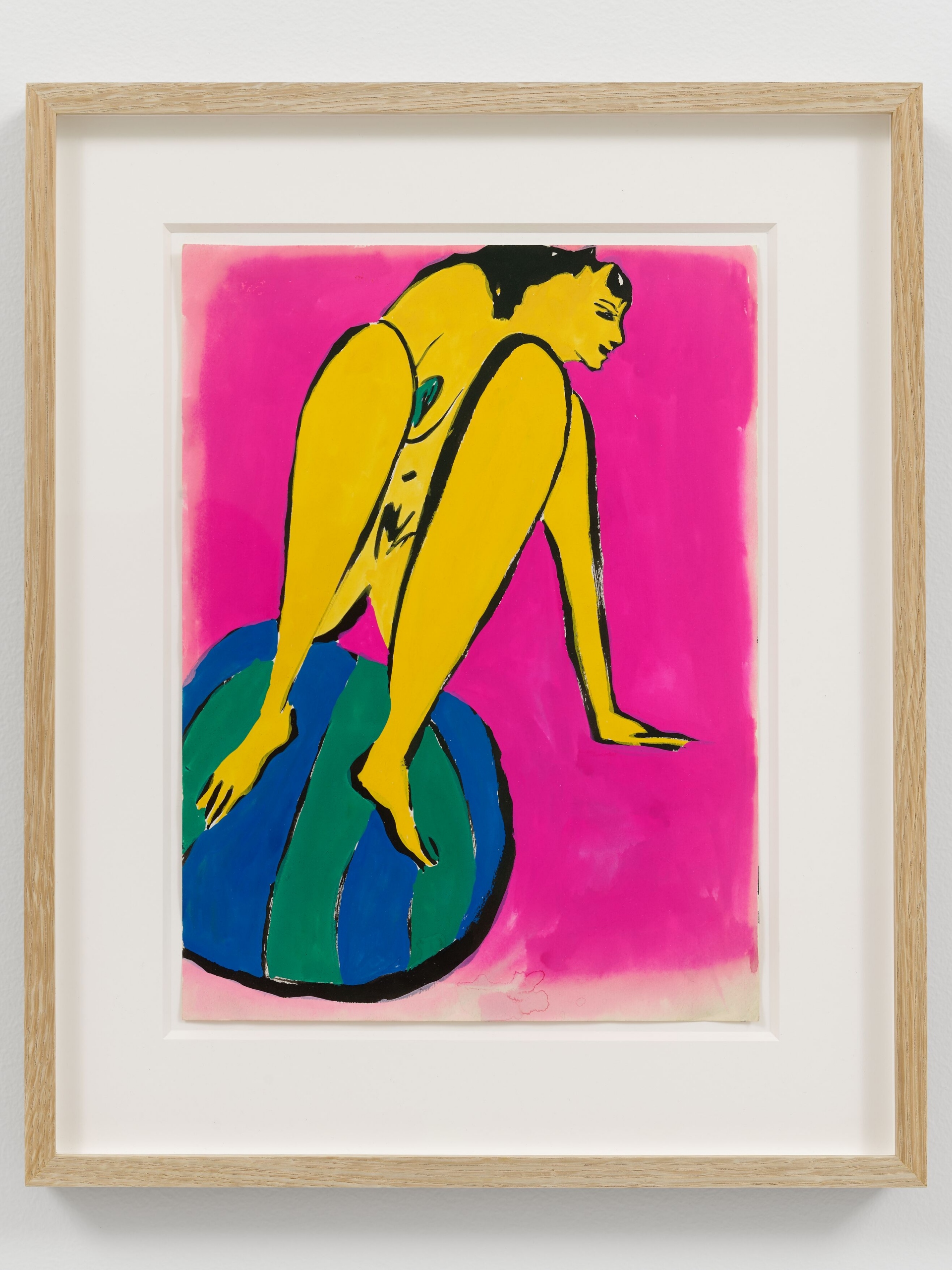
Untitled
1974 c.
Gouache on paper
32.2 x 23.9 cm / 12 5/8 x 9 3/8 in
44.8 x 36.5 cm / 17 5/8 x 14 3/8 in (framed)
Courtesy Estate of Cathy Josefowitz and Hauser & Wirth
Photo: Sarah Muehlbauer
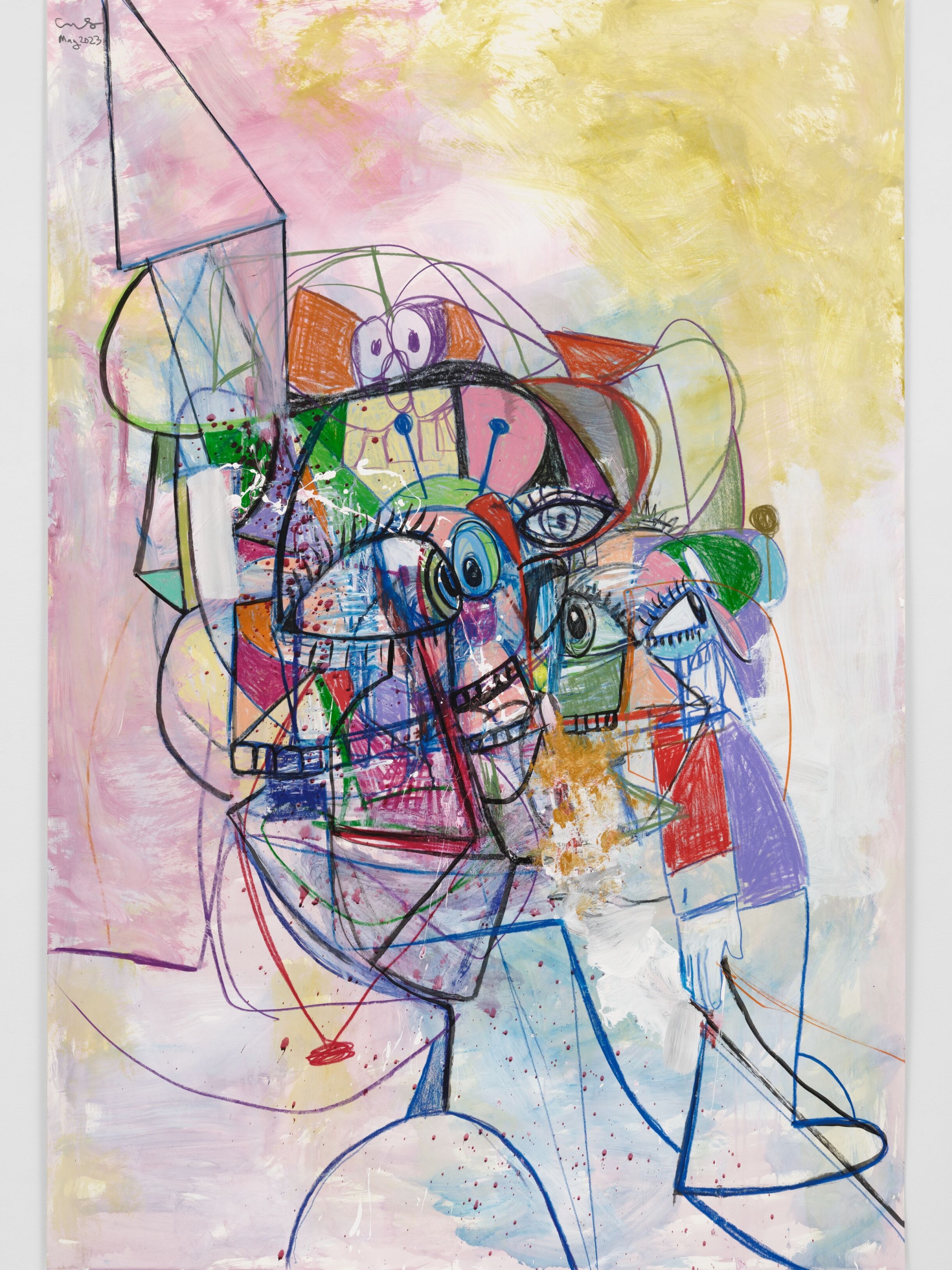
Internal Combustion
2023
Acrylic, wax crayon, and metallic paint on paper
182.9 x 121.9 cm / 72 x 48 in
200 x 139.1 cm / 78 3/4 x 54 3/4 in (framed)
©️ George CondoCourtesy the artist and Hauser & Wirth
Photo: Thomas Barratt
Allison Katz’s debut with the gallery in Asia since joining in 2022 includes her new work ‘In the House of Menander’ (2023), the latest incarnation of her fairy motif. Recurring in her work since 2016, the fairy represents Katz‘s interest in the way in which surrogates from other realms are positioned as stand-ins for states of body and mind. In this work, Katz’s fairy is based on a purported sighting in a British garden, caught on CCTV and blown-up several hundred times. With its obscured face, iridescent wings and multi-colored limbs, the fairy plays with questions of appearances and genre. Through her painting, Katz explores the persistence of fairy and folklore, from archaic beliefs and oral history to current technologies and contemporary channels of fixation. Harmony Korine joined Hauser & Wirth in March this year. Over the last thirty years, he cultivated a multidisciplinary art practice that resists categorization and is admired internationally for improvisation, humor, repetition, nostalgia and poetry. Drawing since his childhood, Korine originally conceived the ‘Twitchy’ paintings as studies for his films. He creates each image using a smartphone, digitally painting over the photographs before projecting the finished images onto canvas and rendering them in oil paint. Crossing the line between actuality and animation, Korine fills his canvases with bright, electric colors that approach disintegration while still feeling physically real, an effect akin to the bursts of light often used in cinematic special effects. Viewing his ‘Twitchy’ character as an imaginary companion—a ghost that accompanies him on a psychogeographic tour of Miami— these works also convey a foreboding darkness; through Harmony Korine’s paintings, the South Florida landscape becomes an otherworldly realm inhabited by enigmatic, even alien forces.

“our friends”
2022
Moon gold and red gold leaf and oil on linen
147.3 x 111.8 x 3.8 cm / 58 x 44 x 1 1/2 in
© (2023) Jenny Holzer, member Artists Rights Society (ARS), NY
Courtesy the artist and Hauser & Wirth
Photo: Thomas Barratt
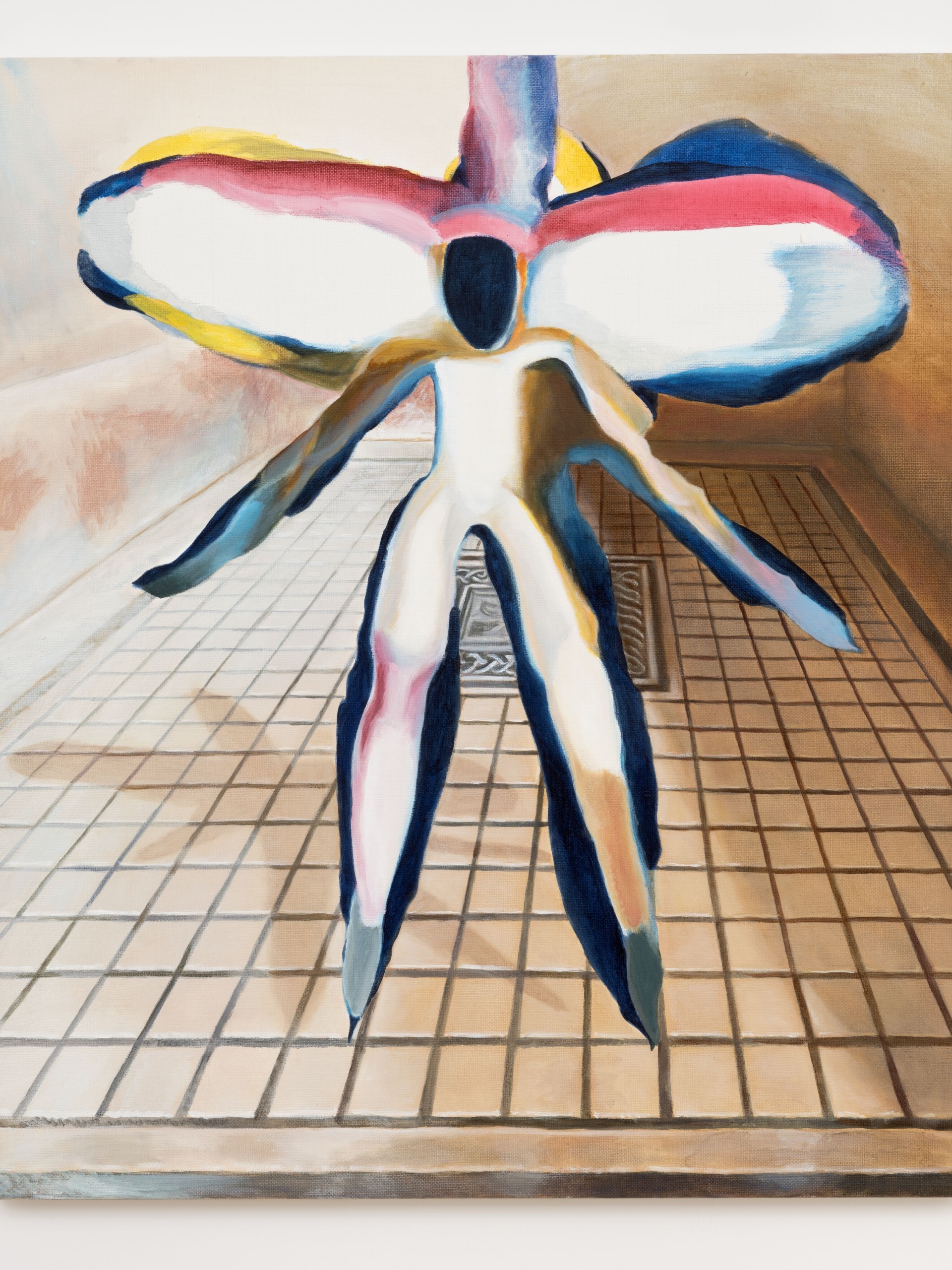
In the House of Menander
2023
Acrylic on linen
105 x 90 x 3.6 cm / 41 3/8 x 35 3/8 x 1 3/8 in
© Allison Katz
Courtesy the artist and Hauser & Wirth
Photo: Damian Griffiths
Coinciding with Frieze Seoul, a number of Hauser & Wirth artists will also be showing museum and institutional exhibitions in the Asia-Pacific region, including Roni Horn’s first solo museum show in China at He Art Museum, Shunde (7 June – 7 October); Zoe Leonard’s solo exhibition at Museum of Contemporary Art Australia, Sydney (11 August – 5 November); Günther Förg major retrospective at Long Museum (West Bund), Shanghai (26 August – 25 October); Maria Lassnig’s first significant presentation in China at UCCA, Beijing (2 September 2023 – 7 January 2024.
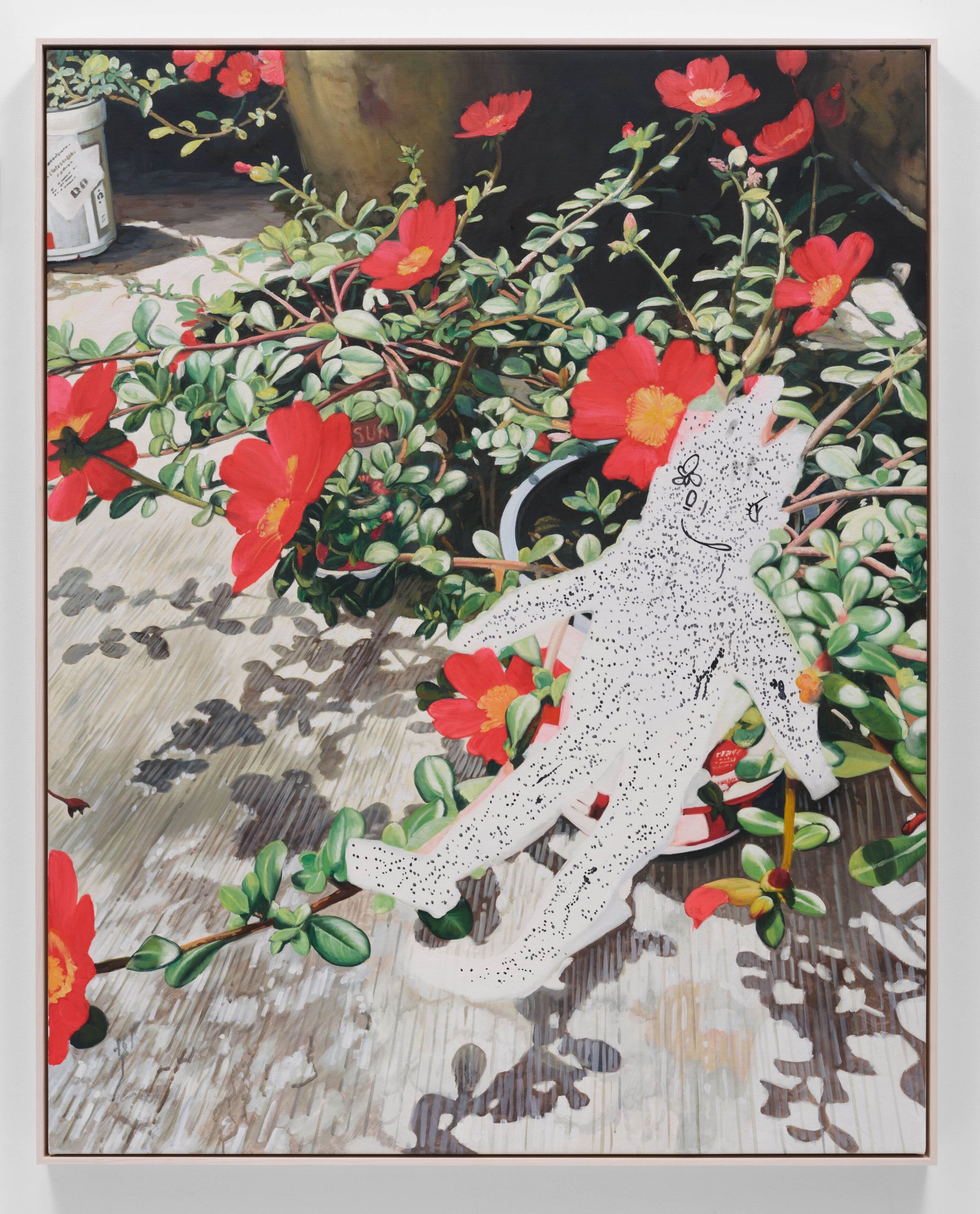
Twitchy Roze
2018
Oil on canvas
153.7 x 121.9 cm / 60 1/2 x 48 in
© Harmony Korine
Courtesy the artist and Hauser & Wirth
Photo: Thomas Barratt





